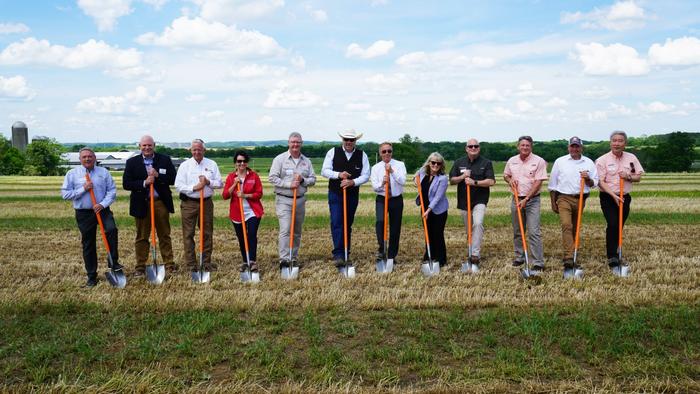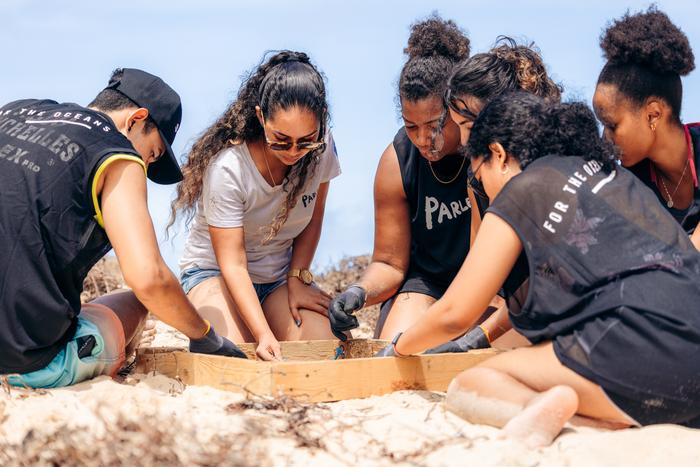Tree islands bring biodiversity to oil palm plantations
Islands of trees in oil palm plantations can significantly increase biodiversity within five years without reducing productivity. This has been shown by an experiment, which has been running for over ten years in Indonesia as part of the Collaborative Research Centre (CRC) “EFForTS” at the University of Göttingen. An international team of researchers led by […]

Islands of trees in oil palm plantations can significantly increase biodiversity within five years without reducing productivity. This has been shown by an experiment, which has been running for over ten years in Indonesia as part of the Collaborative Research Centre (CRC) “EFForTS” at the University of Göttingen. An international team of researchers led by Göttingen planted experimental islands of trees in plantations on the island of Sumatra to counteract the species loss caused by the intensive cultivation of oil palms. The results have been published in the journal Nature.

Credit: Watit Khokthong
Islands of trees in oil palm plantations can significantly increase biodiversity within five years without reducing productivity. This has been shown by an experiment, which has been running for over ten years in Indonesia as part of the Collaborative Research Centre (CRC) “EFForTS” at the University of Göttingen. An international team of researchers led by Göttingen planted experimental islands of trees in plantations on the island of Sumatra to counteract the species loss caused by the intensive cultivation of oil palms. The results have been published in the journal Nature.
The conversion of tropical forests into oil palm plantations leads to considerable losses of biodiversity and ecological functions. Worldwide, a total of about 21 million hectares of palm oil plantations are cultivated, mainly in Indonesia and Malaysia. To mitigate the negative impact on the environment, the scientists established 52 tree islands with local tree species in an industrial oil palm plantation. This has turned out to be a promising strategy for ecological restoration.
The research team had expected yields to deteriorate over time as the tree islands consumed resources for their own development at the expense of the oil palms. “However, even after five years after the experiment began, the oil palms have continued to flourish. And this has been accomplished without the use of artificial fertiliser in the tree islands,” explains first author Professor Delphine Clara Zemp, now at the University of Neuchâtel. “Our results show that the industry can benefit from this intervention. There is real potential to develop these methods to enrich biodiversity on a large scale.”
“Most studies of the ecology of palm oil plantations are limited to observing the loss of biodiversity and deterioration of the ecosystem,” explains co-author Professor Holger Kreft, Head of Göttingen University’s Biodiversity, Macroecology and Biogeography Research Group. “Our approach to ecological restoration goes a step further and is unique worldwide, as it takes place against the backdrop of industrial-scale oil palm plantations across large areas. Using a rigorous experimental design, we can determine the optimal composition and size of islands of trees that will bring about the best possible way to restore the ecology.”
The researchers analysed the biodiversity of soil microorganisms (such as bacteria or fungi), insects and other small invertebrates, plants, birds and bats three to five years after establishing the experiment. They also quantified the impacts in terms of water, carbon and nutrient cycle regulation, microclimate, soil quality, pollination and control of biological communities and invasive species. Close cooperation with the owners of the plantation was essential for the smooth running of the research project. “The collaboration helped us to better understand issues relating to the agricultural and economic management of the plantation and how our experimental trials affect oil palm yields. These aspects are crucial for the industry,” says Zemp.
However, the 40 authors of the study agreed that the top priority must continue to be the prevention of deforestation: “The encouraging results must not be allowed to jeopardise the conservation of tropical forests, which are home to irreplaceable biodiversity,” the team concludes.
The Collaborative Research Centre “Ecological and Socio-economic Functions of Tropical Lowland Rainforest Transformation Systems (EFForTS)” is funded by the German Research Foundation (DFG). Further information can be found here: www.uni-goettingen.de/efforts. Contributions to this paper are from researchers around the world including those at the Institut Pertanian Bogor and Jambi University in Indonesia, the universities of Neuchâtel in Switzerland, Hohenheim in Germany, and the German Centre for Integrative Biodiversity Research (iDiv) Halle-Jena-Leipzig.
Original publication: Delphine Clara Zemp et al. Tree islands enhance biodiversity and functioning in oil palm landscapes. Nature 2023. https://doi.org/10.1038/s41586-023-06086-5.
Contact:
Professor Holger Kreft
University of Göttingen
Biodiversity, Macroecology and Biogeography Research Group
Tel: +49 (0)551 39-28757
Email: hkreft@uni-goettingen.de
www.uni-goettingen.de/de/128741.html
Journal
Nature
DOI
10.1038/s41586-023-06086-5
Method of Research
Experimental study
Article Title
Tree islands enhance biodiversity and functioning in oil palm landscapes
What's Your Reaction?

































